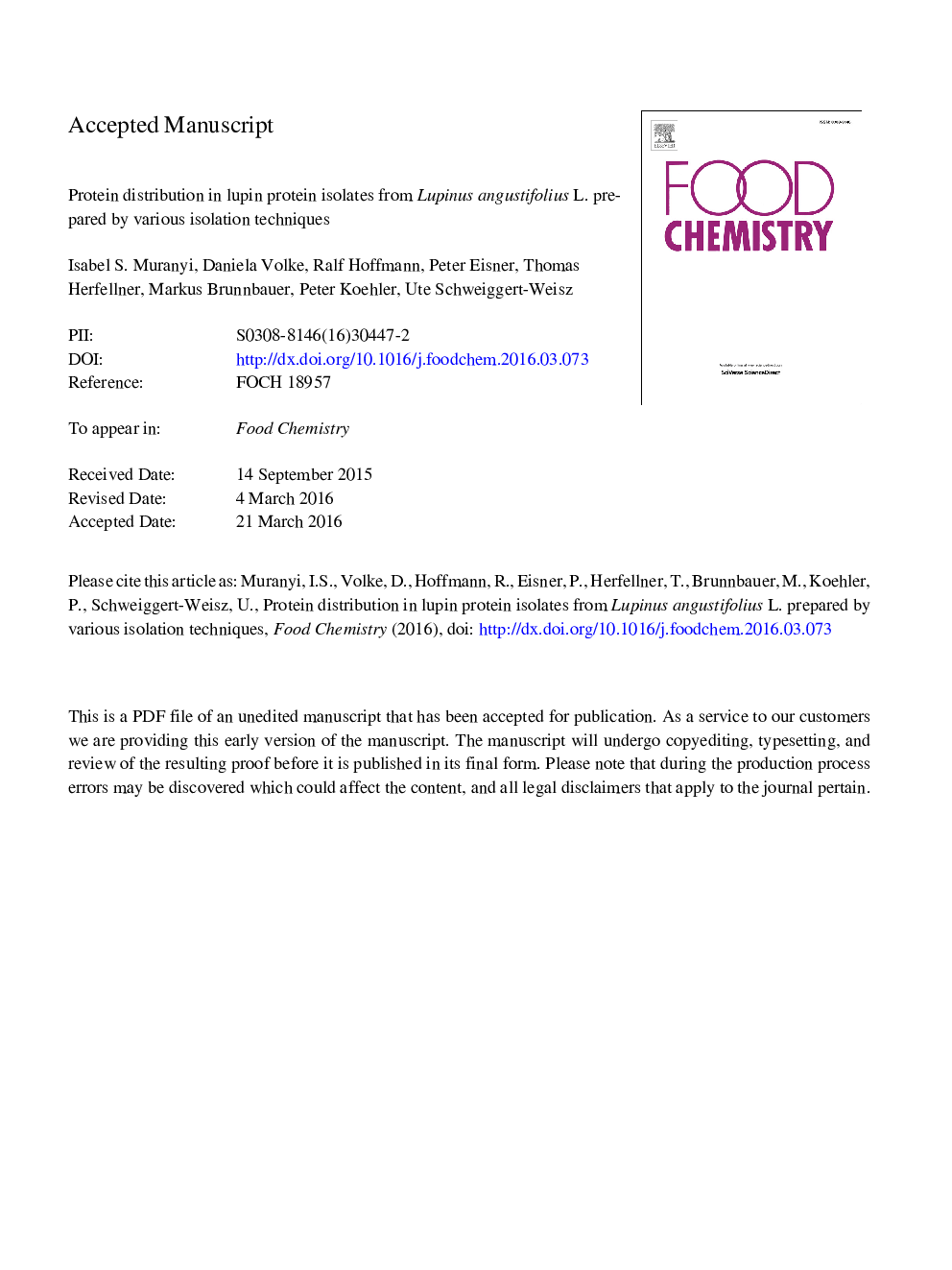| Article ID | Journal | Published Year | Pages | File Type |
|---|---|---|---|---|
| 7588610 | Food Chemistry | 2016 | 41 Pages |
Abstract
Differences in the protein distribution of various protein isolates from Lupinus angustifolius L. Vitabor were identified as affected by the isolation procedure (alkaline and/or salt-induced extraction followed by isoelectric and/or dilutive precipitation). Protein isolates extracted in alkaline solution showed higher protein yields (26.4-31.7%) compared to salt-induced extraction (19.8-30.0%) or combined alkaline and salt-induced extraction (23.3-25.6%). Chemical variations among the protein isolates especially occurred within the albumins. Protein isolates precipitated isoelectrically showed the highest contents, whereas protein isolates precipitated by dilutive showed the lowest contents of conglutin δ. Furthermore, the alkaline subunits of conglutin α and conglutin γ decreased during alkaline extraction compared to salt-induced extraction. A decrease in protein-bound polar and basic amino acids was shown after protein isolation. In contrast, the amounts of nonpolar, aliphatic, aromatic, hydroxylated and sulfur-rich amino acids were higher in the lupin protein isolates compared to the lupin flakes. However, the functional side chains could not be related to the specific molecular arrangements of the protein isolates, as a similar amino acid composition was found among the protein isolates.
Keywords
DTTEASILPPAGEAOACTFAet al.MOPSTRISMLP3-[(3-cholamidopropyl)dimethylammonio]-1-propanesulphonateSDSPDI3-(N-morpholino)propanesulphonic acidv/vw/vdeionised waterAlbuminDimensionalAlkaline extractionAcetonitrileTrifluoroacetic acidsodium dodecyl sulfate-polyacrylamide gel electrophoresispolyacrylamide gel electrophoresisassociation of official analytical chemistsisoelectric precipitationanalysis of varianceANOVATris(hydroxymethyl)-aminomethaneNumber of samplesvolume per volumeDI waterdithiothreitolcv.Cultivarsodium dodecyl sulphateProtein yielddry matterIsoelectric pointProtein nitrogenweight per volumeMolecular weightCHAPShigh performance liquid chromatographyHPLC
Related Topics
Physical Sciences and Engineering
Chemistry
Analytical Chemistry
Authors
Isabel S. Muranyi, Daniela Volke, Ralf Hoffmann, Peter Eisner, Thomas Herfellner, Markus Brunnbauer, Peter Koehler, Ute Schweiggert-Weisz,
